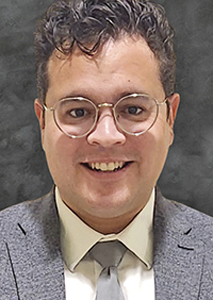Program Information
Development of Shape Memory Alloy Actuated Flexible Needle Control System for Prostate Brachytherapy
B Ruiz1*, P Hutapea2, K Darvish2, A Dicker3, Y Yu3, T Podder1,4, (1) North Carolina University, Greenville, NC, (2) Temple University, Philadelphia, PA, (3) Thomas Jefferson University, Philadelphia, PA, (4) University Hospitals and Case Western Reserve University, Cleveland, OH
WE-A-108-8 Wednesday 8:00AM - 9:55AM Room: 108Purpose: To develop and evaluate a controller system capable of accurately guiding a shape memory alloy (SMA) actuated flexible needle to deliver therapeutic agents using a curvilinear approach for prostate brachytherapy for improved geometrical and dosimetric conformity.
Methods: An experimental needling system was developed using flexible cannula of a 17-gauge HDR needle actuated by Nitinol SMA. Experiments were performed in air at room temperature (22-degC) and in controlled warm water-bath (38-degC, which is close to human body temperature). A silicone-based coating was applied to the SMA wire-actuator for electrical insulation in water. Two closed-loop control algorithms, proportional-derivative-integral (PID) and PID-P3 (with cubic term of positional errors), were implemented and tested using LabVIEW (National Instruments, version-4.3.3). The needle and SMA actuator were integrated with a 5-DOF Aurora (NDI, Ontario, Canada) electromagnetic (EM) sensor embedded at the tip of the needle for trajectory tracking. Performance was evaluated in terms of EM-sensor feedback sampling intervals of 100ms, 500ms, and 1000ms, and needle-tip displacements of 0.5mm, 2mm, and 2.5mm. Controller gains were experimentally determined.
Results: PID-P3 controller outperformed PID controller in all measured domains. Sampling time of 100ms yielded unstable performance for all displacements in water. Sampling time of 500ms with needle-tip displacement of 2mm yielded the optimal performance with smaller overshoot and higher stability. In-water results were comparable to in-air measurements for the optimum performance at 500ms sampling time and 2mm displacement.
Conclusions: PID-P3 based SMA-actuated needle appears to be adequate for conforming to the radius of curvature of a prostate gland, as well as operating effectively in human body. For small displacements (<0.5mm), fast rise-time was observed, however, stability suffered. For larger displacements (>=2mm), stability increased but was hampered by slower rise-time. Further investigation of PID-P3 and other control algorithms (neuro-fuzzy and adaptive) may offset slow rise-time and increase stability.
Funding Support, Disclosures, and Conflict of Interest: This study was funded by the U.S. Army Medical Research and Materiel Command(Garnt #W81XWH-11-1-0399).
Contact Email:


